 by our College Data Analytics Team
by our College Data Analytics TeamLIU Post total enrollment is approximately 15,066 students. 5,453 are undergraduates and 2,541 are graduate students.
Male/Female Breakdown of Undergraduates
The full-time LIU Post undergraduate population is made up of 67% women, and 33% men.
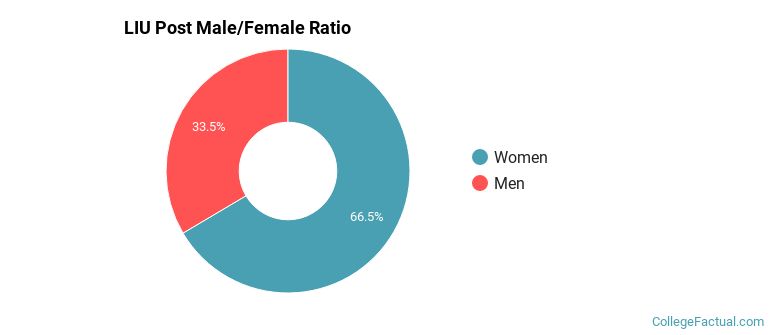
For the gender breakdown for all students, go here.
LIU Post Racial/Ethnic Breakdown of Undergraduates

| Race/Ethnicity | Number |
|---|---|
| White | 2,243 |
| Hispanic | 750 |
| Unknown | 722 |
| Black or African American | 706 |
| Asian | 698 |
| International | 180 |
| Multi-Ethnic | 128 |
| Native Hawaiian or Pacific Islander | 14 |
See racial/ethnic breakdown for all students.
Male/Female Breakdown of Graduate Students
About 76% of full-time grad students are women, and 24% men.
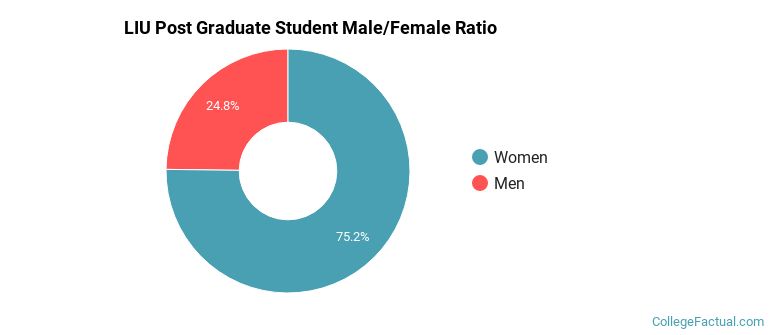
For the gender breakdown for all students, go here.
LIU Post Racial-Ethnic Breakdown of Graduate Students
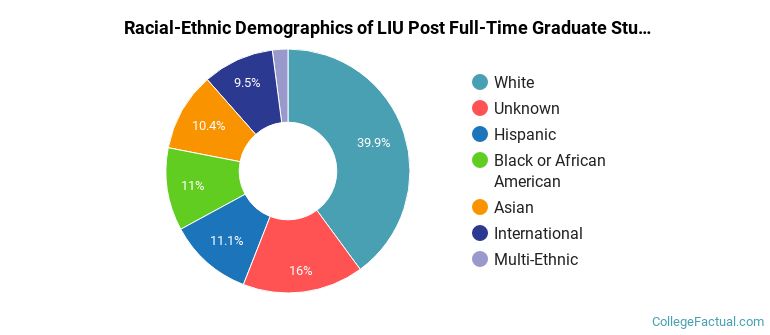
| Race/Ethnicity | Number |
|---|---|
| White | 1,110 |
| Unknown | 318 |
| Hispanic | 301 |
| Black or African American | 283 |
| Asian | 265 |
| International | 202 |
| Multi-Ethnic | 55 |
| Native Hawaiian or Pacific Islander | 2 |
See racial/ethnic breakdown for all students.

| Race/Ethnicity | Number |
|---|---|
| White | 6,773 |
| Hispanic | 2,110 |
| Unknown | 2,090 |
| Black or African American | 1,659 |
| Asian | 1,587 |
| International | 459 |
| Multi-Ethnic | 331 |
| Native Hawaiian or Pacific Islander | 27 |

There are approximately 10,178 female students and 4,888 male students at LIU Post.
LIU Post ranks 1,232 out of 2,183 when it comes to geographic diversity.
12.6% of LIU Post students come from out of state, and 0% come from out of the country.

The undergraduate student body is split among 18 states (may include Washington D.C.). Click on the map for more detail.
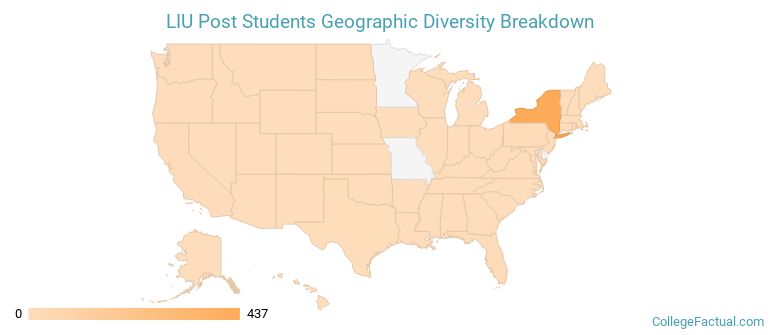
| State | Amount |
|---|---|
| New York | 437 |
| New Jersey | 10 |
| Florida | 9 |
| Pennsylvania | 9 |
| California | 6 |
Learn more about international students at LIU Post.
A traditional college student is defined as being between the ages of 18-21. At LIU Post, 29.17% of students fall into that category, compared to the national average of 60%.
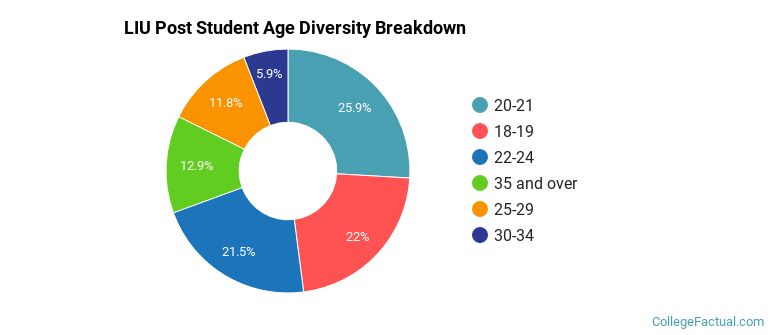
| Student Age Group | Amount |
|---|---|
| 20-21 | 1,340 |
| 18-19 | 1,139 |
| 22-24 | 1,110 |
| 35 and over | 668 |
| 25-29 | 608 |
| 30-34 | 305 |
| Under 18 | 0 |
Footnotes
*The racial-ethnic minorities count is calculated by taking the total number of students and subtracting white students, international students, and students whose race/ethnicity was unknown. This number is then divided by the total number of students at the school to obtain the racial-ethnic minorities percentage.
References
Department of Homeland Security Citizenship and Immigration Services
Learn more about how College Factual creates their Diversity Rankings.